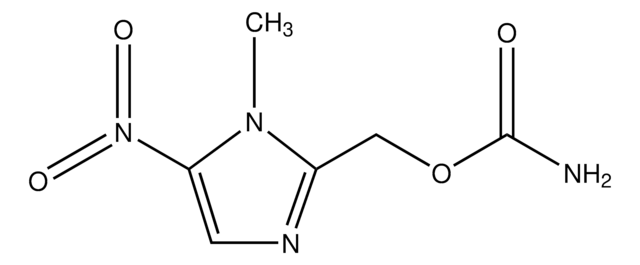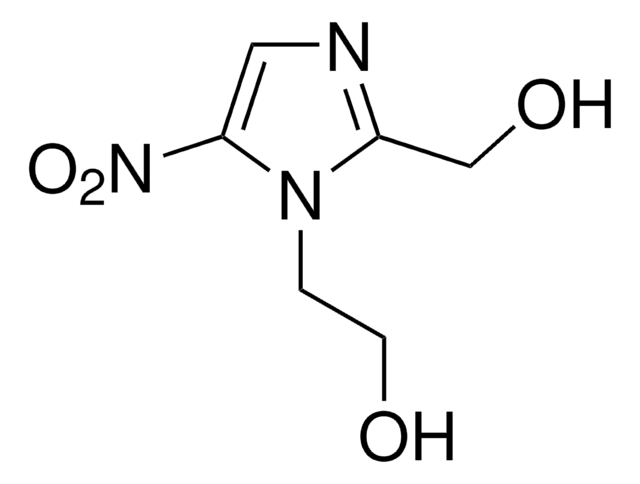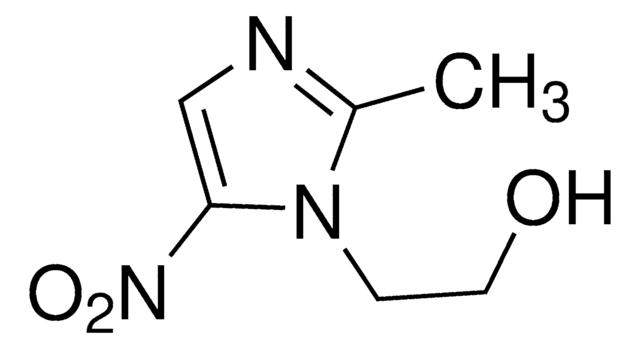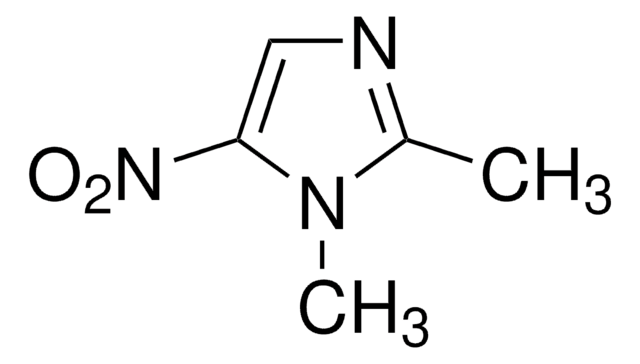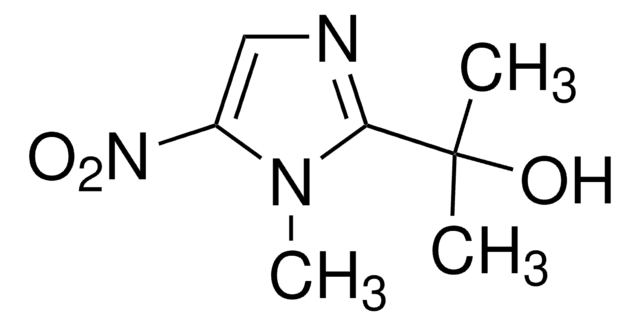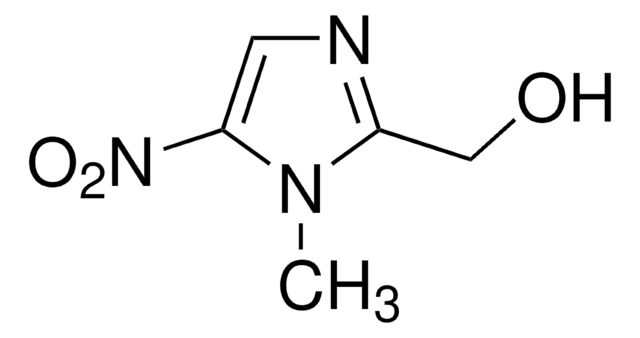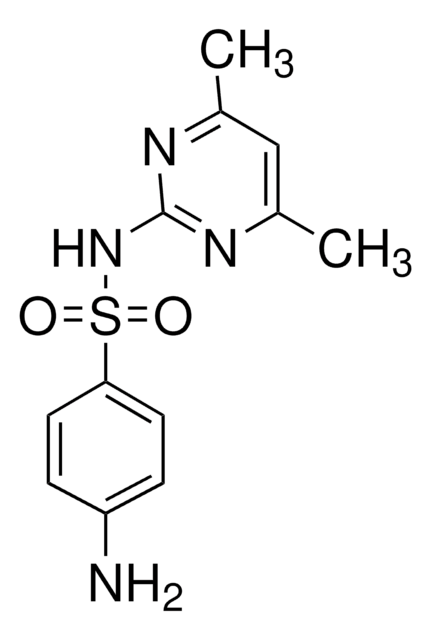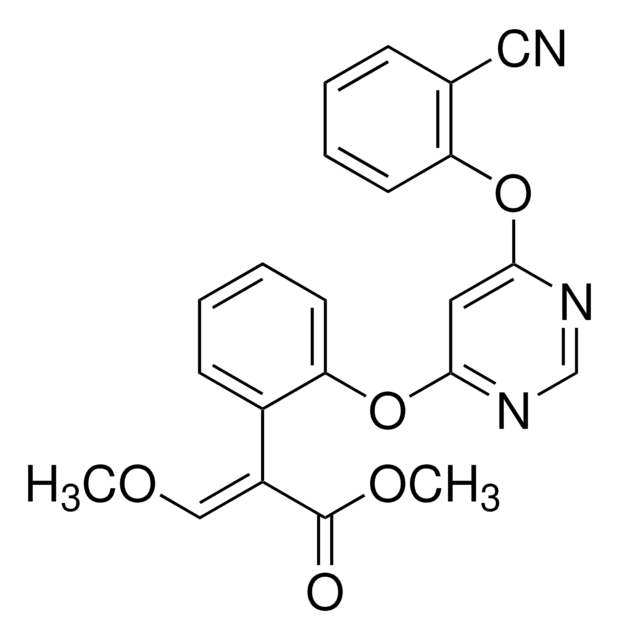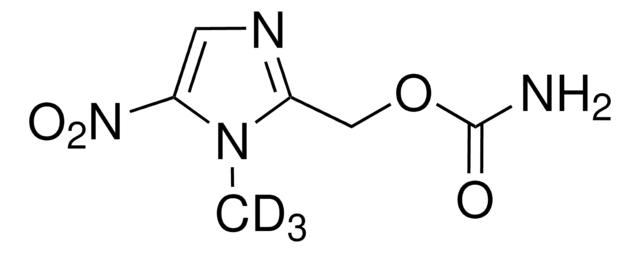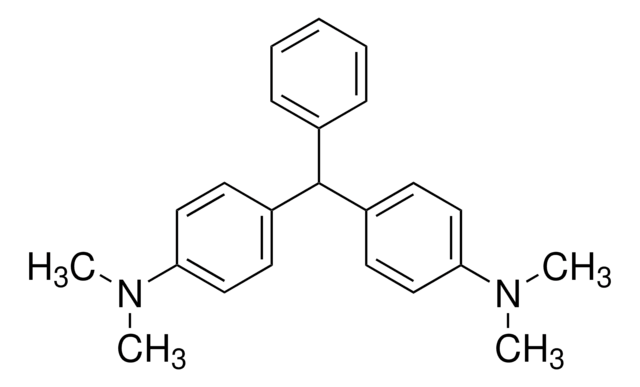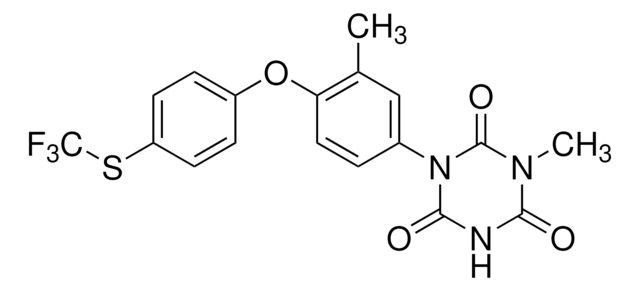32173
Ipronidazole
VETRANAL®, analytical standard
Synonyme(s) :
1-Methyl-2-(1-methylethyl)-5-nitro-1H-imidazole, 2-Isopropyl-1-methyl-5-nitroimidazol, NSC 109212, Ro 07-1554
About This Item
Produits recommandés
Qualité
analytical standard
Niveau de qualité
Gamme de produits
VETRANAL®
Technique(s)
HPLC: suitable
gas chromatography (GC): suitable
Application(s)
forensics and toxicology
veterinary
Format
neat
Chaîne SMILES
[N+](=O)([O-])c1[n](c(nc1)C(C)C)C
InChI
1S/C7H11N3O2/c1-5(2)7-8-4-6(9(7)3)10(11)12/h4-5H,1-3H3
Clé InChI
NTAFJUSDNOSFFY-UHFFFAOYSA-N
Catégories apparentées
Description générale
Application
Produits recommandés
Informations légales
Faites votre choix parmi les versions les plus récentes :
Déjà en possession de ce produit ?
Retrouvez la documentation relative aux produits que vous avez récemment achetés dans la Bibliothèque de documents.
Les clients ont également consulté
Notre équipe de scientifiques dispose d'une expérience dans tous les secteurs de la recherche, notamment en sciences de la vie, science des matériaux, synthèse chimique, chromatographie, analyse et dans de nombreux autres domaines..
Contacter notre Service technique